Contact Form
You can email us at info@immersionvr.co.uk. Alternatively, you can fill in our contact form below and we will get back to you as soon as possible.
Virtual reality refers to interactive images or videos which enable the viewer to explore the entire 360 degrees of a scene. Unlike a regular image of video, which is shot from a fixed view point, VR production captures every part of a location.
In the travel industry, virtual reality can be used to capture tourism destinations in a unique and immersive way.
This is achieved using specialist cameras, rigs, and software. The finished content can then be viewed on either a VR headset or a regular computer or mobile device.
Many people assume that VR content can only be viewed on a specialist VR headset but this is not the case. Although VR is more immersive when viewed in this way, it can also be viewed on any device, including mobiles.
Take a look at the tourism VR content below, produced by us at Immersion VR. You can click or swipe across the video in order to view an entire 360 degrees.
The most common way in which VR is utilised in the tourism industry is for marketing. Being able to capture tourism destinations in such a memorable and immersive way is a powerful marketing tool.
One of the greatest strengths of VR is allowing the user to experience the feeling of “being there”. Whilst regular images and videos can work well for showing what a destination has to offer, they don’t often elicit an emotional response.
VR in tourism has the ability to place the user at the heart of the scene and makes it easier for them to imagine themselves at the location.
When many people think of VR they think of it as CGI (computer generated imagery), which is how it is used in the gaming industry. However, there is a different form of virtual reality known as 360 VR, or 360VR video.
360 VR focuses on the real world rather than computer generated imagery. This makes it perfect for the tourism industry where it is important to show users a real location rather than a mockup or a simulation.
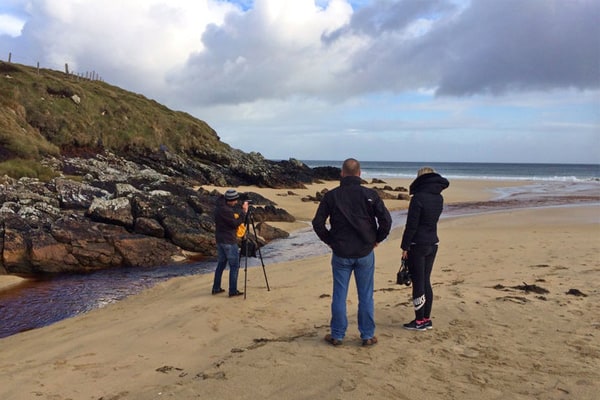
360VR content in tourism is captured in a similar way to regular image and video content. A 360 VR company, like us at Immersion VR, arrives at the location with specialist equipment in order to shoot the scene. The footage is then taken back to the studio where it is produced into VR content using specialist software.
This form of VR is the most widely used form of VR in tourism and it something that we specialise in here at Immersion VR. 360 VR is also commonly used in education, the real estate industry, and for online marketing in general.
VR can be used in many different ways in the tourism industry. The technology is evolving at a rapid rate and the uses of VR within tourism is expanding along with the technology.
The main VR technologies that are used in the travel industry are VR video and VR photography.
A VR tourism video works much like a normal video. They can be viewed on social media or websites, but unlike a regular video, the user is able to explore the entire scene whilst the video is playing.
VR tourism videos are captured using specialist cameras known as omnidirectional cameras. These cameras film every angle of the destination at once. After filming, the footage is taken back to the studio where it is stitched together in order to produce a VR tourism video.
There are 2 types of VR tourism videos:
Monoscopic VR videos for tourism can be viewed on regular devices including mobiles and computers. The viewer can click or drag across the screen in order to rotate the field of view, similar to turning your head to explore a scene.
Take a look at the VR tourism video below for an example of monoscopic footage. The video can be viewed on any device, inclusing mobile and desktop. Scroll or swipe across the video to explore the entire surroundings.
Stereoscopic VR videos for tourism are produced for VR headsets and they cannot be viewed on a regular device. Although they take more time to produce and are typically more expensive, they provide a more immersive travel experience. These videos feature head tracking so the user can move their head to explore the surroundings in a realistic way.
For more information about monoscopic and stereoscopic VR content, take a look at our in-depth article here.
VR tourism photography involves the production of 360 images of travel destinations. These images are generally designed to be viewed on regular devices such as mobiles and desktops.
Virtual tourism photography works much like a VR tourism video but with still images. The view is free to scroll or swipe across the image in order to view the entire scene.
Take a look at a sample of some of the 360 tourism images taken below.
The images are taken with state-of-the-art DSLR cameras on specialist rigs which allow for the capture of 360 degrees. Because DSLR cameras are used, it allows for higher resolution images when compared to VR tourism videos.
The 360 images can then be uploaded to social media and websites for user to view just as easily as regular images. Although these images are typically not as immersive as VR videos, they are quicker to produce and generally more cost effective.
Using 360 photography, it is also possible to produce hotel tours which enable the user to explore a hotel and its surroundings in an immersive and interactive way.
Applications of VR in tourism include:
Virtual reality travel experiences typically refer to VR tourism videos made for VR headsets. These virtual travel experiences aim to create a feeling that is as much like being in the real destination as is possible.
At the cutting edge of 360 VR, virtual reality travel experiences provide something truly unique and memorable to the user. The number of travel agencies and travel companies embracing this technology is continually growing and they promise a bright future within the industry.
VR headsets typically provide the most realistic virtual reality travel experience for the user. A VR headset uses specialist software which tracks the movement of the users head. This allows the user to explore the travel destination as they would in real life.
Currently, the number of people that own a VR headset is rising at a fast rate. This growth in headsets can largely be attributed to the gaming market, where the technology is being pushed hard.
Also, all the major online platforms including Google, Facebook, and Amazon are all investing heavily in VR headsets and VR content, promising a bright future for this space.
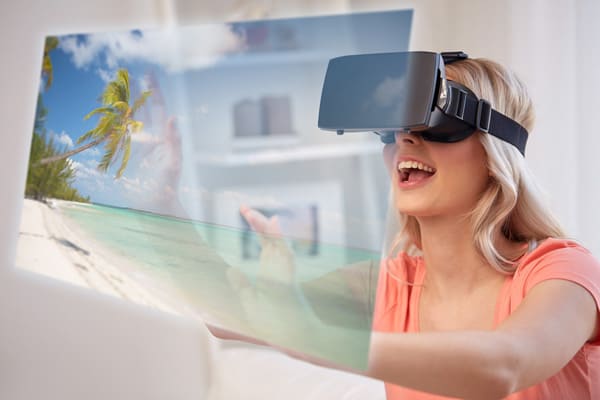
VR created for headsets is more expensive to produce as it requires the production of Stereoscopic content and spatial audio. However, for those travel companies looking to be at the forefront of the technology, the cost can be worth it to allow them to stand out from the crowd and provide an unrivalled experience to their clients.
One of the most common uses of VR headsets in tourism is by the travel agencies themselves. They can offer prospective clients in-store virtual travel experiences that completely transform what it means to visit a travel agency.
Instead of showing visitors brochures and computer screens, travel agents can provide their clients with a virtual experience. This approach can also be used to great effect at trade shows and events, quickly gaining interest from the general public.
Utilising VR allows travel brands to stand out from the crowd and it provides the user with an experience they won’t forget. Many travel companies have embraced VR technology and have used it to improve sales, as well as to gain brand exposure.
Virtual hotel tours allow users to explore a hotel and its grounds in a much more immersive way than ever before. Just how virtual tours are transforming the real estate industry, they are also having a huge impact on the hotel industry.
Hotel interiors and exteriors can be captured in extreme detail using high resolution cameras and specialist equipment. The images are then merged together (stitched) to form a complete 360 degree interactive tour in which the user can choose which room to explore.
VR hotel tours are usually monoscopic, which means they can be viewed on any device including mobile and desktop. The tours can then be uploaded to websites and social media for prospective clients to view at any time.
They can also be stereoscopic if the situation and budget allows. This can result in a more realistic and immersive experience.
Unlike regular images of hotels, these tours allow users to imagine themselves in the space. This kind of immersion helps to create unique brand engagement and a lasting impression with the user.
To find out more about virtual tours please take a look at our in-depth article here.
As well as hotels, VR travel tours can also be created for a wide range of travel destinations and landmarks. VR tours of popular tourism destinations can be produced to give the user a taste of what it’s like to be there.
The benefits of virtual reality in tourism include:
According to research carried out in Germany by Statista (see below), almost 50% of people would use VR as a tool for choosing their holiday destination (providing it was free). 13% of those surveyed were actually willing to pay for the VR.
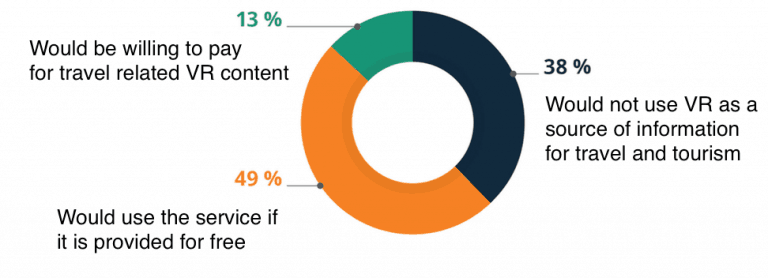
Furthermore, research carried out by Tourism Australia found that almost 20% of consumers had used VR to select a holiday destination. Around 25% of consumers said they planned to use VR in the future to help them decide on a holiday destination.
Overall, the research by Tourism Australia found that VR had the ability to bring a destination to life and make consumers consider travelling to places they wouldn’t have otherwise considered. In particular, consumers were most interested in the VR content that related to nature, wildlife, aquatic, and coastal offerings. – http://www.tourism.australia.com/content/dam/assets/document/1/6/y/7/t/2003897.pdf
At Immersion VR, we can’t see tourism VR going anywhere. On the contrary, we have seen an increase in the use of VR for travel. We cannot predict how this space will develop or what new VR travel technologies will be developed. However, we can spot emerging trends within the industry.
Common VR travel trends include the following:
We are sure that this list will be growing in the near future so watch this space!
Popular landmark destinations often suffer from the environmental problems associated with too many tourist visitors. By making VR experiences of these landmarks, the number of users can be controlled, reducing the environmental impact.
Take a look below at a VR travel experience of the Grand Canyon. Don’t forget to drag or scroll across the video to explore the scene.
With the number of VR headsets on the increase, these type of experiences are sure to become a common feature in many households across the world.
Passengers embark upon a replica of an aeroplane cabin while they are given the pre-flight safety demonstration and then served gourmet food. The goal is to provide them with a realistic experience of flying to a destination.
VR flight experiences are a relatively new addition to the VR travel space. A Tokyo based company called First Airlines has created the world’s first virtual reality airline.
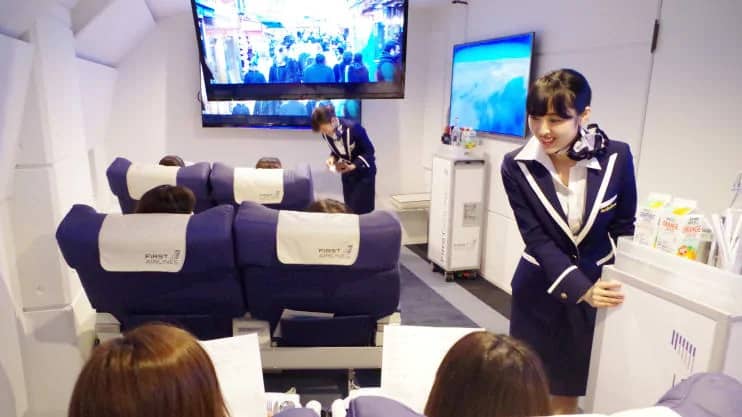
Upon “arrival” the passengers are then given a virtual tour of the destination with VR headsets. Whilst still in its early stages, this kind of experience has the potential to provide people with travel experiences that they would otherwise be unable to afford.
A virtual booking interface is another very recent development within tourism VR. Users can book their holiday whilst wearing a VR headset. All of the booking process takes place within virtual reality.
Everything from choosing the hotel to paying for the holiday happens whilst the user is experiencing the VR. Whilst this has limited applications, we can see travel agencies and companies taking this approach to increase the number of conversions.
It seems to be the logical next step up from one-off travel experiences to taking care of the entire booking process. Whilst still in its infancy, we can see virtual booking interfaces becoming more common within the tourism industry.
One of the areas in which virtual reality can replace travel is for those that cannot travel, in particular seniors. When people think of VR, they don’t tend to think of the elderly. But being able to provide them with travel experiences that would otherwise not be possible can be extremely rewarding.
In a blog post written by The Big Issue, they explain how a company called Viarama have been working on a VR tool to help people with Alzheimer’s disease and dementia. They worked on providing senior citizens who are receiving end-of-life care with a one-of-a-kind experience.
Billy Agnew, chief executive of Viarama, said:
“In a hospice situation, we are going in there and letting people ‘travel’ the world. We are letting people travel to where they got married, or where they did their national service, and to places that they never thought they would be able to see.” –
https://www.bigissue.com/latest/technology/how-virtual-reality-is-giving-the-elderly-remarkable-end-of-life-adventures/
Viarama achieves this by using HTC Vive headsets, Google Earth VR software, and powerful computers. But whilst the experience is virtual, the emotions it elicits are definitely real.
Billy Agnew went on to say:
“It’s quite often hugely moving. The first time we worked in a hospice we had two doctors who were in to evaluate what we were doing, and both of the doctors broke down because it was so emotional.” –
https://www.bigissue.com/latest/technology/how-virtual-reality-is-giving-the-elderly-remarkable-end-of-life-adventures/
VR is great for creating moments of immersion but it cannot yet replace the complete immersion of being in a real space 24/7.
In fact, in a recent study carried out by European touring company Italy4Real, 81% of adults said that VR can’t replace travel. 92% said that visiting a destination in VR did not equate to visiting it in real life. Furthermore, 77% cited sampling the local food as being important to them. –
https://www.mediapost.com/publications/article/302947/virtual-reality-not-seen-as-substitute-for-travel.html
Other downsides of VR include smells and the overall atmosphere created by people and animals. Whilst VR technology is progressing at a fast rate, it’s pretty safe to say that virtual reality won’t be replacing travel anytime soon.

VR in tourism is currently best used for marketing travel destinations and hotels. With the growth of VR, we think that virtual travel experiences will become a huge part of the tourism industry in the near future.
At Immersion VR we have a wealth of experience in VR for travel with clients across the UK and overseas. We have shot on location in countries such as Oman, Scotland, Spain, Indonesia, and Mexico.
We can cater for any kind of tourism VR that you need, from virtual reality travel experiences to VR hotel tours.
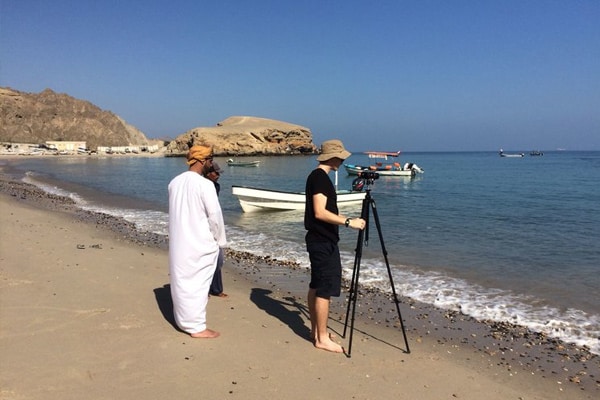
We take great pride in the quality of our work and we are unlike any VR travel company. With skills in so many areas of VR, we can advise and inform our clients every step of the way.
Our highly trained crew and attention to detail is what puts us amongst the best VR travel experts out there.
For more information on VR for travel and the services we offer please get in touch today.
You can email us at info@immersionvr.co.uk. Alternatively, you can fill in our contact form below and we will get back to you as soon as possible.